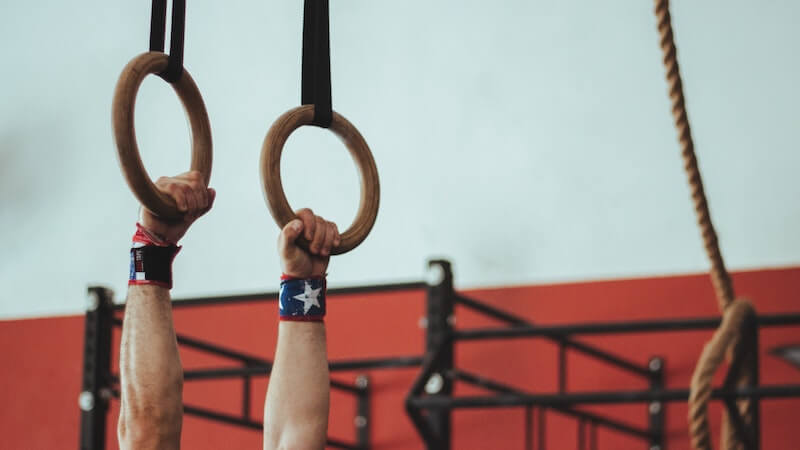Check Your Form: The Bench Press, Overhead Press, and Barbell Row
Episode #8 of the course Hack your workout: A self-paced system for core muscle and posture strength by John Robin
Welcome to Day 8 of our course!
Now that we’ve dug more into the two most complex strength exercises, we’re going to cover the next three runners-up.
Bench Press: A Deeper Study
Think of the bench press as the exercise that lets you lift things properly in your day-to-day life. While squats and deadlifts help you build the hip and leg strength for general lifting, you also need to maintain proper posture for your upper spine. You achieve this by strengthening your shoulder girdle, so the lifting energy moves to your arms, not your spine.
All three of the exercises we’ll cover today strengthen the shoulder girdle for this purpose. The bench is for strength in the forward movement of the arm.
Here are your advanced bench press pointers.
Entering your lift:
• Place your bench inside the power rack so when you lie on it, the barbell on the J-hooks is directly above your eyes.
• Make sure the safety pins on the power rack are set so if you dropped the bar above your neck, it would hit them first.
• Grip the bar so your forearms form a right angle with it.
Setting your body up:
• Place your feet about shoulder-distance apart, angled out 45°.
• Press into your feet to arch your lower back, driving your butt hard into the bench.
• Flex your shoulder blades together so your chest is firm against the bench.
Depressing the bar:
• Lift the bar from the J-hooks, keeping your arms straight.
• Swing your arms until the bar is directly above your collarbone.
• Take in a deep breath and hold it.
• Lower the bar in a diagonal line until it’s above your lower rib cage.
• Your arms should tuck in at about a 45° angle to your body.
Lifting the bar:
• Keep your breath held.
• Lift back in a diagonal line until the bar is back above your collarbone.
• Blow out your breath as you complete this lift.
Finishing safely:
• When finished your reps, keeping your arms straight, swing them back until the bar hits the power rack.
• Do not lower it to the J-hooks until you see it flush against the vertical bars.
• “Guessing” where the J-hooks are can make you accidentally drop the bar on your face, especially when you are tired from several reps, so don’t forget this final tip!
Barbell Row: A Deeper Study
The barbell row works with the bench press to assist the backward-ranging motion of the shoulder girdle. This is extremely important to avoid a hunched back, as it rounds out the energy stored in the shoulder joint. You will notice the benefits of this exercise when carrying heavy bags—instead of just lifting up, you can also lift your shoulders back, diffusing the energy into more muscles while keeping good posture.
There are only a few special pointers for this one.
Entering:
• Enter just like the deadlift, except have your feet angled at 45° and shoulder-distance apart.
• Grip the bar wider, so your forearms make a right angle with the bar.
• Go less to half-squat than on the deadlift.
• Your ribs should be slightly in front of your knees.
Lifting:
• Breathe in deep and hold it.
• Raise the bar to your lower ribs.
• Keep the part-squat the whole way.
• You can lift your upper body slightly (10-15°) when the bar is above your knees.
• Your arms should go back to the sides of your lower ribs, tucked in like wings, about 45° to your body.
Lowering:
• Lower in exact reverse to how you raised the bar, avoiding your knees.
Overhead Press: A Deeper Study
The overhead press works the upward motion of the shoulder girdle, the final of the three that helps you transfer lifting energy from your upper spine to your arms. Its form is straightforward, but there are a few tips worth noting.
Starting:
• Set up the J-hooks on the outside vertical beams of the power rack.
• Place the bar here.
• Grip so your forearms form a right angle to the bar.
• Lift the bar and rest it on your breastbone.
Pressing overhead:
• Lean your upper body back slightly before lifting.
• Lift your chin.
• Your body resembles a partly-flexed bow.
• When pressing the bar up vertically, straighten your body.
• Lower your chin when the bar passes your head.
• When your arms are straight, the bar will be directly above your head.
Lowering:
• Lean your upper body back again, lifting your chin.
• The bar should pass just in front of your chin on its way back to your breastbone.
These pointers can help you ensure that you are doing the five most nuanced aspects of your workout properly. Keep this checklist handy until you have it mastered, then when you’ve done that, keep watching videos on form so you can keep improving and working out safely.
Tomorrow, we’ll talk about how best to do the sets of your workout. Stay tuned!
Recommended video
In-depth workshop on the bench press with Ben Pollock
Share with friends

